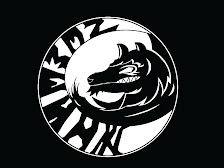19, 20 May 2007
Hours completed: 7+7=14 hours
- We were taught the definition of the kayak parts.
- We learnt that Bow is the front of the kayak, Stern is the back, Portside is the left, Starboard is the right, Deck is the top, Hull is the bottom, Deck line is a tight line used for emergency. Cockpit is the entrance where we sit on the kayak, and the Cockpit coaming is the round part that prevents water entering the cockpit, and also for holding.
- We also learnt that the paddle consist of two blades, the shaft, and the part between the shaft and the blades is the neck. The backface is the convex part of the blade, and the powerface is the concave part.
- We were taught the safety rules and handling of the kayak. We learnt how to handle the kayak properly.
- After getting our paddle and buoyancy vests, we were told to conduct a vest check by holding hands and getting into the sea with our legs above water, to test the efficiency of the vests. We were also told to swim 50m, to build up our water confidence.
- We were taught to embark and disembark properly from the kayak. We also learnt deep sea embarking, to enter the kayak in deep sea.
- We were taught the capsize drill. We have to hold the kayak and paddle by the hull, and capsize, then tap 3 times underwater, followed by getting out of the kayak and holding onto the kayak and shouting for help with the paddle pointing up. We have to hold on to our kayak so that we will be easier to spot. We also have to empty the kayak by using the see saw motion.
- We were taught how to hold the paddle properly on dry land, with right hand knuckles parallel to the blade, and how to do a proper stroke. We learnt forward paddling and reverse paddling.
- After that, we went into the sea with our kayak and practised our paddling. We were also taught to stop the paddle.
- We learnt how to spin the kayak on the spot by using sweep strokes, drawing a semicircle with our elbows straight, to make the kayak turn.
- We also learnt how to do a J stroke and classic draw. This is to move the kayak sideways. J stroke is to move the paddle towards you and using your other hand push the paddle up by going down. Classic draw is to move the paddle towards you, then turn it and move it away, and repeat.
- We were also learnt stern rudder which is to keep the kayak running in a straight line with the paddle by keeping it close to either side of the stern.
- We also learnt support and recovery, which is to maintain balance when the kayak is off balance.
- We learnt to rescue capsized kayaks in deep water, by having one rescuer and an assistant.
Calendar
Monday, May 21, 2007
Subscribe to:
Post Comments (Atom)


No comments:
Post a Comment